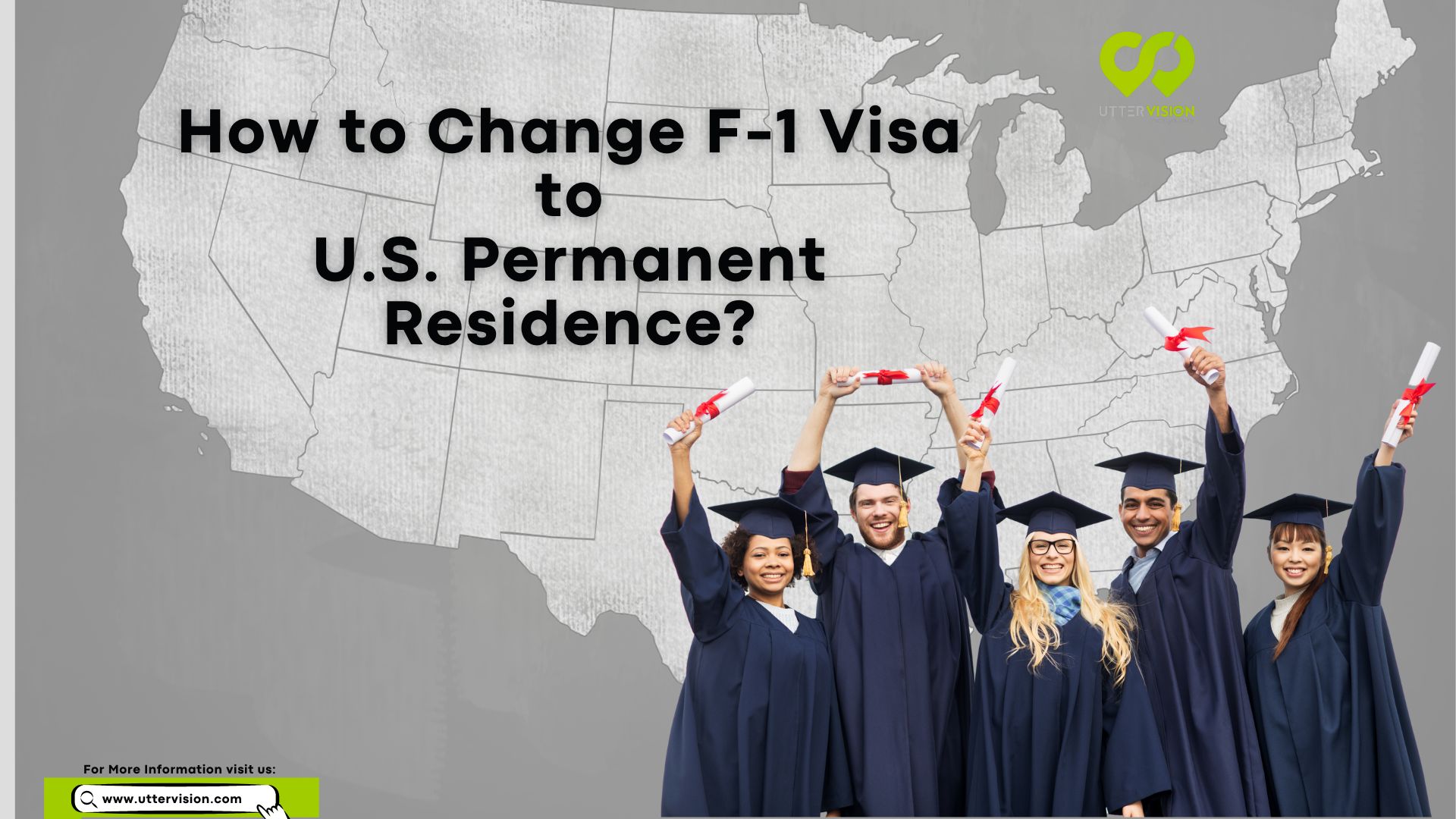
How to Change F-1 Visa to U.S. Permanent Residency?
Transitioning from an F-1 visa to permanent residency in the United States is a common aspiration for international students. The F-1 visa allows students to stay in the U.S. for educational purposes, but many seek ways to remain in the country after graduation. This blog will guide you through the various pathways to obtaining a Green Card while adhering to SEO principles.
Understanding the F-1 Visa
The F-1 visa is a non-immigrant student visa that allows foreign nationals to study at accredited institutions in the U.S. While it offers a temporary stay, many students look for options to transition to permanent residency (Green Card) once they complete their studies. The journey can be complex, but with the right information and planning, it is achievable.
Pathways to Permanent Residency
There are several pathways for F-1 visa holders to secure permanent residency in the U.S. These include:
Employment-Based Visas (H-1B)
After graduation, F-1 visa holders can apply for an H-1B visa, which allows individuals to work in a specialty occupation. To be eligible, you must have a job offer from a U.S. employer who is willing to sponsor you. The H-1B visa is initially granted for three years, with the possibility of extension.
How to Apply:
Find a Sponsor: Connect with employers who are open to hiring international graduates.
Labor Condition Application (LCA): Your employer must file an LCA with the Department of Labor, affirming that they will pay you a prevailing wage and that hiring you will not adversely affect the working conditions of similarly employed workers.
H-1B Application: Once the LCA is approved, your employer submits an H-1B petition to the U.S. Citizenship and Immigration Services (USCIS).
Optional Practical Training (OPT)
OPT allows F-1 visa holders to work in their field of study for up to 12 months after graduation. For STEM (Science, Technology, Engineering, Mathematics) graduates, there is a possibility for a 24-month extension.
OPT Process:
Application: Submit your OPT application to USCIS up to 90 days before your program end date.
Job Search: Use your OPT period to gain relevant work experience and potentially secure an H-1B sponsorship from your employer.
Family Sponsorship
If you have family members who are U.S. citizens or lawful permanent residents, they can sponsor you for a Green Card. This process involves filing Form I-130, Petition for Alien Relative.
Eligibility:
Immediate relatives (spouses, parents, children under 21) are prioritized and do not face annual caps on visa numbers.
Other relatives may face longer wait times due to visa caps.
EB-5 Investor Visa
The EB-5 visa program allows individuals to obtain a Green Card by investing in a new commercial enterprise in the U.S. A minimum investment of $900,000 in a targeted employment area or $1.8 million in other areas is required.
Application Steps:
Investment: Invest in a qualifying project.
Form I-526: File Form I-526, Immigrant Petition by Alien Investor, to demonstrate the legality of the investment funds.
Steps to Obtain a Green Card
Once you have secured employment and potentially transitioned to an H-1B visa, the next step is to apply for a Green Card. Here’s how to navigate this process:
PERM Labor Certification:
Your employer must file a PERM application to demonstrate that there are no qualified U.S. workers available for the job you are being offered.
Form I-140, Immigrant Petition for Alien Worker:
After obtaining PERM approval, your employer files Form I-140. This form confirms your eligibility for an employment-based Green Card.
Adjustment of Status (Form I-485):
Once your I-140 is approved and your priority date is current, you can file Form I-485 to adjust your status to a lawful permanent resident.
Important Considerations
Start Early: It’s essential to begin planning your transition to a Green Card as soon as possible. Many pathways have specific timelines and application processes that can take time.
Consult an Immigration Attorney: Navigating U.S. immigration law can be complicated. Consulting with an immigration attorney can help you avoid pitfalls and make informed decisions
Stay Informed: Immigration laws and policies change frequently. Stay updated on any changes that may affect your immigration status or pathways to permanent residency.
Conclusion
Transitioning from an F-1 visa to permanent residency in the United States requires careful planning and consideration of various pathways available. Whether through employment, family sponsorship, or investment, there are multiple options to achieve your goal of living and working in the U.S. If you are considering this transition, consult with immigration experts to help guide you through the process and enhance your chances of success.
For more insights and guidance on U.S. immigration processes, visit uttervision.com to access valuable resources and expert advice tailored to your specific needs. Don't hesitate to reach out for personalized assistance on your immigration journey!






